British Columbia’s northern climate and its cooler temperatures make the reptile species count lower than in most of North America. Even so, there are over a dozen native reptile species in the Canadian province, and invasive reptiles are beginning to compete for habitat and food. According to the Invasive Species Council of British Columbia, three non-native reptiles already have breeding populations or suspected breeding populations, and others are on a watchlist.
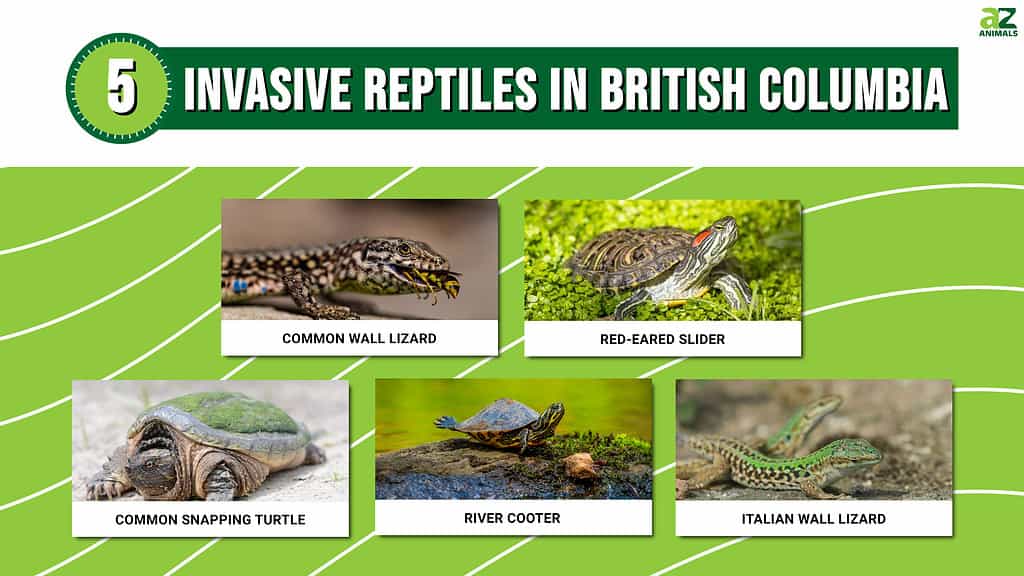
Invasive species damage native plants and animals by competing for the same resources; they also sometimes prey on natives. A terrific example of an invasive species is wild mustard. Its small, bright yellow flowers appear every spring and summer across huge swaths of North America. While its flowers attract bees and are quite pretty, this invasive cabbage cousin is changing the native ecology by pushing native plants out. In some areas, it’s the only flower you see for miles.
Between pet, horticulture, and the shipping trades, hundreds of species are transplanted from one part of the world to others on a daily basis — where some escape their enclosures and become invasive.
1. Common Wall Lizard (Podarcis muralis)

Common wall lizards are native to Europe and have been imported to several areas of North America, including British Columbia
©Saad315/Shutterstock.com
These omnivorous lizards eat everything from insects and spiders to fruit. The common wall lizard is a highly adaptable species that reproduces up to three times each spring and summer and brumate through the colder months.
Also called the European wall lizard and Lazarus lizard, this species is a well-established invasive reptile in British Columbia. They first appeared on Vancouver Island in 1967 and have gradually expanded their range from there.
Common wall lizards can grow up to about nine inches long and often resemble northwestern alligator lizards — except with longer legs and toes. And, unlike the alligator lizards, common wall lizards often have a bit of green or blue in their color.
2. Red-Eared Slider (Trachemys scripta elegans)
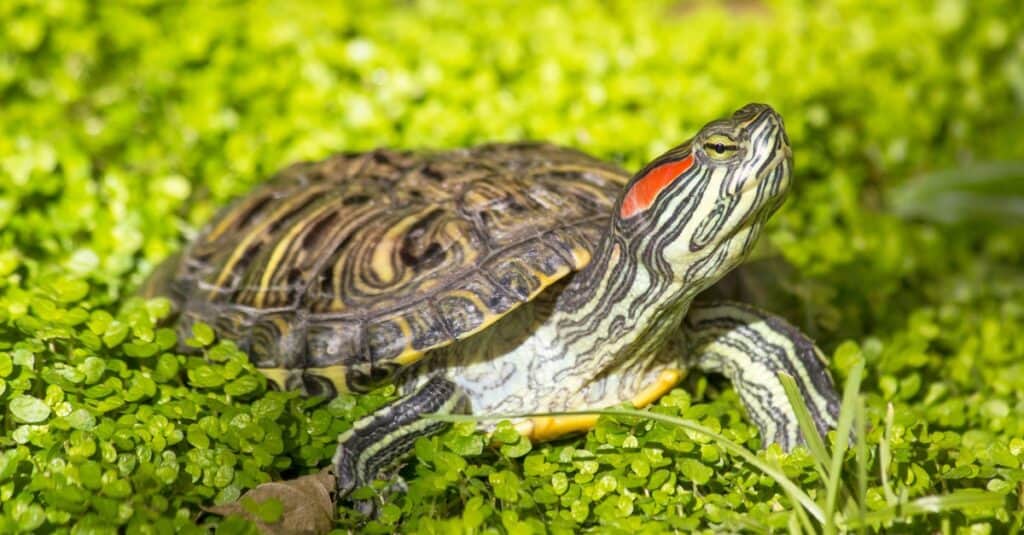
Red-eared sliders are one of the most common turtles in the pet industry but can get big enough to be more difficult to keep as adults.
©xbrchx/Shutterstock.com
These popular pets are also more difficult to care for when they mature. They grow up to 11 inches long and require a good bit of space for swimming, which most people aren’t prepared to provide. So, these adaptable turtles get released into local waterways, where they’re often not native.
In British Columbia, red-eared sliders can impact native turtles because they can carry several harmful respiratory diseases. They also compete for basking sites, habitat, and food.
Red-eared sliders prefer warm water with a lot of vegetation — like what you find in ponds and at the ends of lakes. These omnivores eat plants, insects, snails, crayfish, fish, tadpoles, and even frogs.
3. Common Snapping Turtle (Chelydra serpentina)
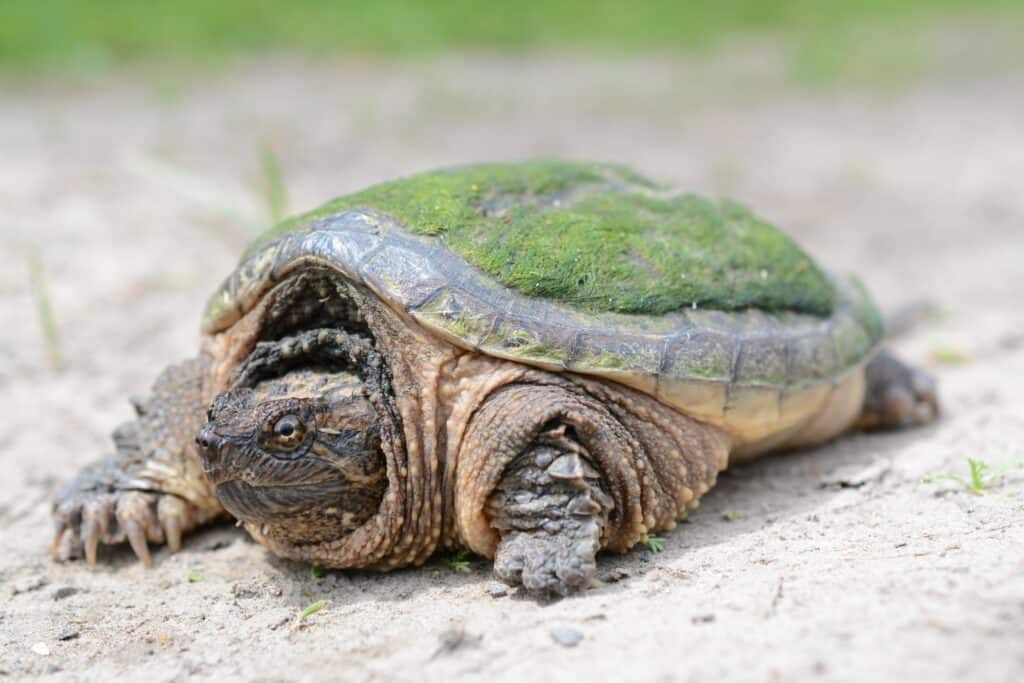
Common snapping turtles may be able to outcompete native turtle species and feed on their young.
©Trevor Meunier/Shutterstock.com
This large turtle with a nasty bite is native to the central and eastern United States. Common snapping turtles are generalists and eat fish, other turtles, carrion, ducks, and maybe even a rodent or two.
First spotted on Southern Vancouver Island in 2012, there’s evidence they may have managed to establish a breeding population in Devil’s Den Lake. These turtles are giants compared to native species, making them able to take over habitat and out-compete for food. An additional danger to local turtles is the snapping turtles’ diet: since it includes other turtles, they’re likely to prey on native turtle hatchlings.
Adult common snapping turtles can grow up to 20 inches long and weigh over 30 pounds. They probably originated as escaped or released pets, but no one is certain.
4. River Cooter (Pseudemys concinna)
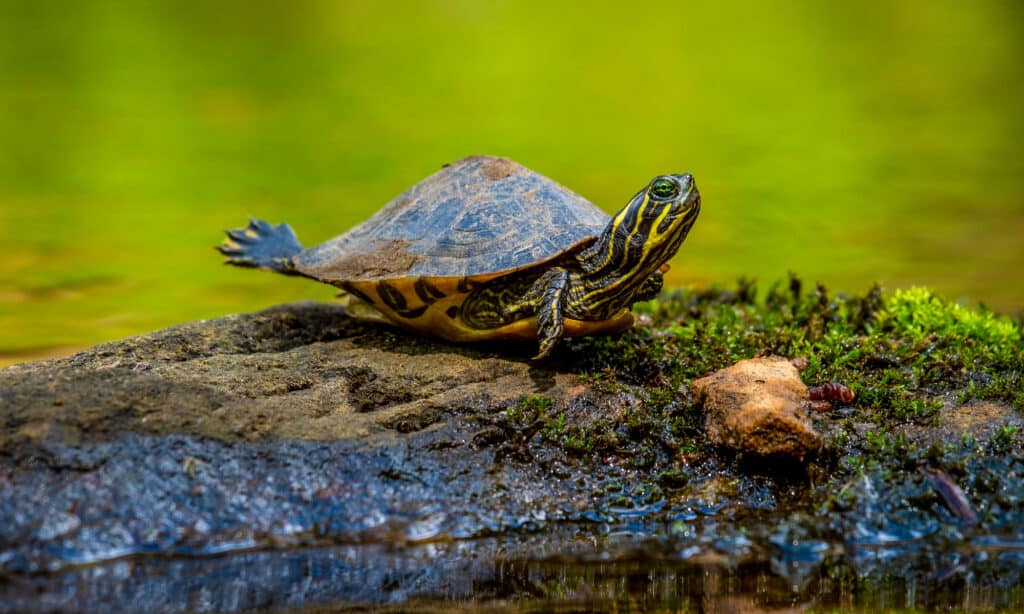
Similar to red-eared sliders, river cooters are equally adaptable.
©samray/Shutterstock.com
Another aquatic turtle species, river cooters are native to the southeastern United States. They usually prefer slower-moving rivers, lakes, and tidal marshes. These turtles bask on warm rocks and logs, often hanging out with other pond turtles like sliders. Like other turtles, they’re omnivores and eat whatever is available — young turtles have strong preferences for protein-rich foods like insects, crustaceans, and fish, while mature turtles feed on aquatic plants and algae.
Although these turtles aren’t on the invasive animal list, compared with the common snapping turtle sightings in iNaturalist, there are more river cooters than snappers. So it looks like river cooters may be at risk of becoming invasive. The information in iNaturalist indicates that they’re found primarily around Vancouver, British Columbia. As with all non-native animals, the possibility of this species developing a breeding population and competing for the resources that native turtles need for survival raises concerns.
River cooters get fairly big but do not come close to snapping turtles. Cooters usually measure between nine and 14 inches long, similar in size to red-eared sliders.
5. Italian Wall Lizard (Podarcis siculus)
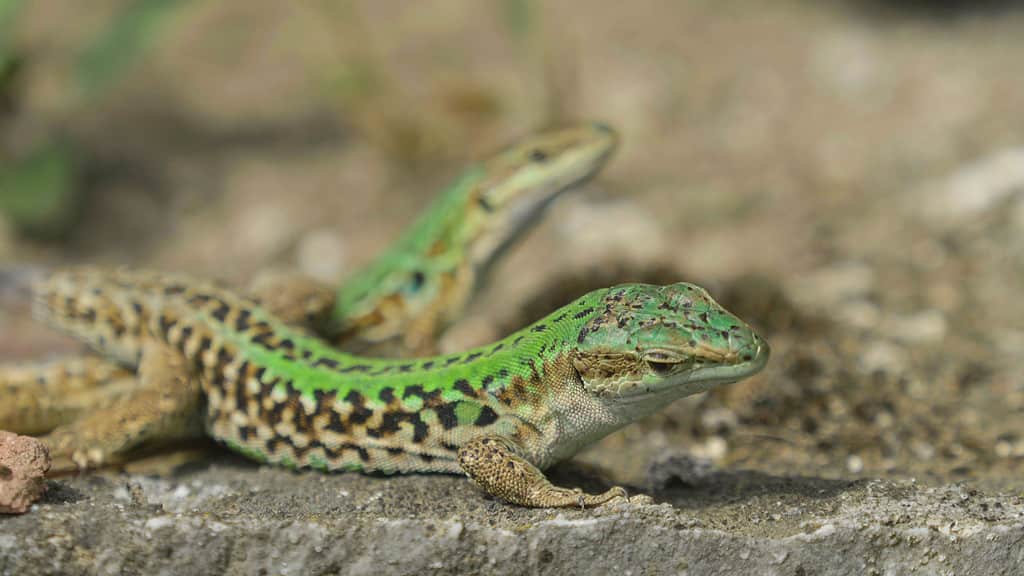
Italian wall lizards are cousins to the already-invasive common wall lizard.
©MEDIAIMAG/Shutterstock.com
Similar in appearance to the common wall lizard, the Italian wall lizard is on the watchlist. There have only been a few sightings, but if it manages to get a foothold the way its cousin has, it’s only a matter of time before it becomes a problem.
This reptile is native to southern Italy, Sicily, and a few other islands. Like other lizards, Italian wall lizards sometimes hitch rides in vehicles and shipping containers, leading to their introduction to countries like Turkey and Canada.
Are Other Non-Native Reptiles in British Columbia?
Yes. Unfortunately, other non-native reptile species have been spotted in British Columbia. Although they’re not considered invasive yet, that’s always a risk.
It’s important to remember that it’s one thing for a lizard or other animal to hitch a ride in a shipment or on a car. One individual doesn’t make an invasive species — it makes an unfortunate animal. However, when there are enough of them to form a breeding population, and they begin to out-compete the natives, then they become a problem. That’s why it is so important not to release pets into the wild, especially non-natives.
INaturalist.org contains several records of non-native species sightings, including brown anoles and river cooters — most in the vicinity of Vancouver, British Columbia. Many records indicate that the anoles came in by way of potting soil. The turtles, however, are probably either escapees or pet releases.
Authorities don’t consider these species invasive yet. But, given the number of sightings, it’s possible in the future.
- Map turtles (Graptemys spp.) — There are only a few sightings in southwestern British Columbia, but these quick-swimming critters are highly adaptable.
- Brown Anole (Anolis sagrei) — These lizards are native to Cuba and the Bahamas. This species has spread to much of North America because they lay their tiny eggs in potting soil, which then gets transported along with the plants.
Summary
As in other parts of the world, British Columbia has species that don’t belong in the habitat causing trouble. Fortunately, the Canadian province hasn’t been hit too hard with invasive reptiles. Its overall cooler climate makes it harder for them to gain a foothold. However, reporting sightings helps authorities keep tabs on whether they’re spreading or just a random, accidental transplant.
| Species | Status | |
|---|---|---|
| 1. | Common Wall Lizard | Invasive; breeding population on Vancouver Island |
| 2. | Red-Eared Slider | Invasive; breeding population in |
| 3. | Common Snapping Turtle | Invasive; possible breeding population in Devil’s Den Lake |
| 4. | River Cooter | Possibly invasive |
| 5. | Italian Wall Lizard | Possibly invasive; on the watchlist |
The photo featured at the top of this post is © iStock.com/jeffdecoste
Thank you for reading! Have some feedback for us? Contact the AZ Animals editorial team.







